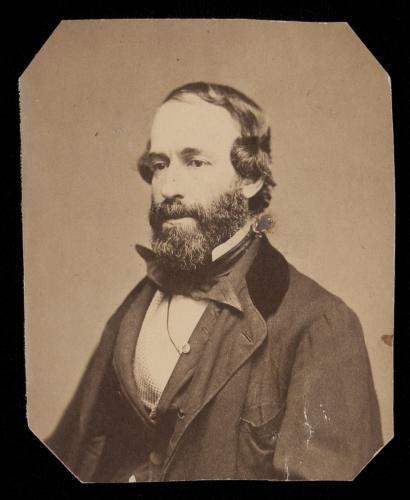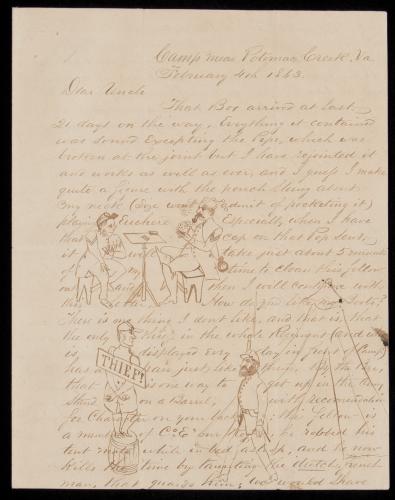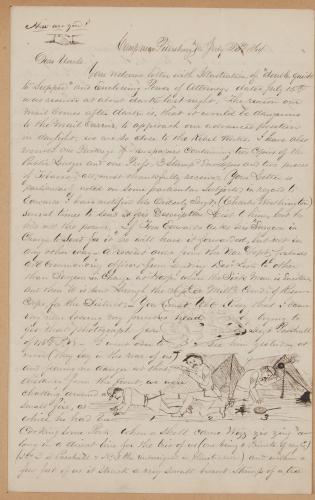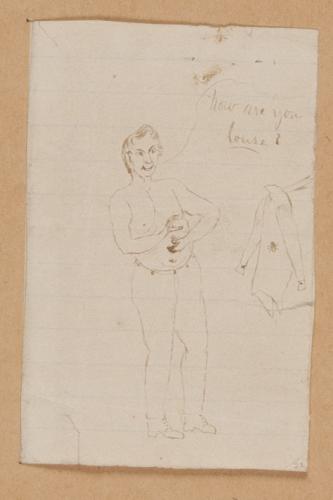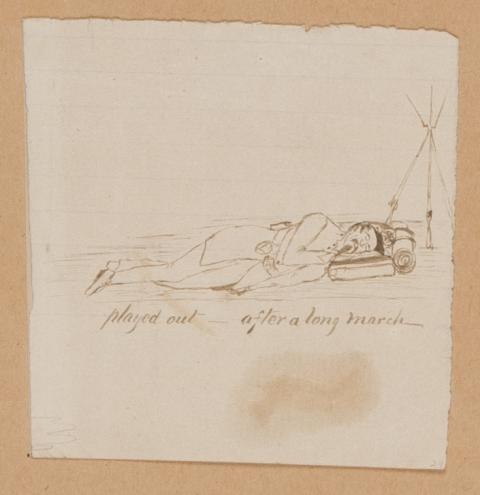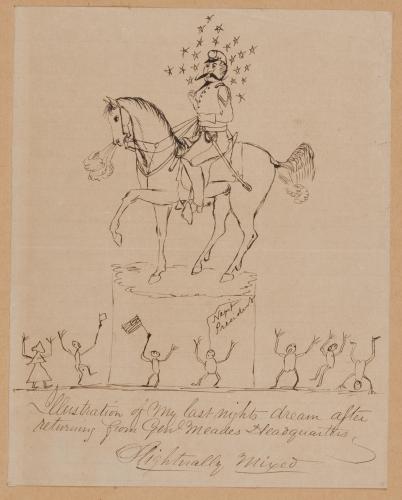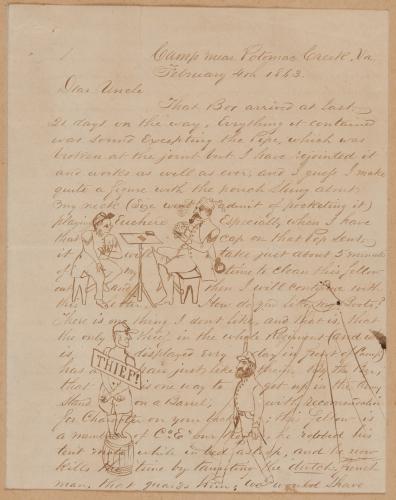You are viewing 2 posts in the category Conservation
Conservation of the George Meade, Jr. Album of Union and Confederate Officers
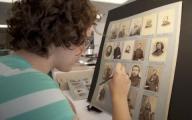
meade conservation
CCAHA Mellon Fellow Jessica Keister inpainting photographs
The Meade Album holds almost 1,400 carte-de-visite portraits of all the officers who served in the Army of the Potomac, the major Union army famous for fighting under General George G. Meade in the Battle of Gettysburg in 1863. The album was assembled by Gen. Meade's son, also named George, who served on the General’s staff during the war.
Collecting cartes was a popular pastime among Civil War officers, and George probably began gathering these images during the war and then worked throughout his life to complete the album, using his father’s connections to locate veterans or find information. Underneath or next to each portrait are likely what are George’s handwritten notes, which include the officer’s name and rank and indicate whether he was injured or killed in battle. Toward the back of one volume, George began to add cartes of Confederate officers. These portraits were most likely collected after the war’s end, when soldiers from both sides networked and held reunions.
George, a member of the Military Order of the Loyal Legion of the United States (the organization that founded the Civil War Museum of Philadelphia in 1888), eventually gave the Meade Album to the Museum, along with other family items. When the album arrived at the Conservation Center for Art & Historic Artifacts (CCAHA) earlier this year to receive treatment through a Save America’s Treasures grant, many of the cartes were faded and yellowed. The surface was cleaned on each of the album pages and old tapes were removed. After mending breaks in the pages and consolidating several fragile photographs, watercolors were used to inpaint losses in the images. Finally, each page was placed in a paper folder for storage.
To reduce future handling of the pages, each page was photographed with a digital camera. The Meade Album is the only source of images for many of the lesser-known officers in the Army of the Potomac, making it a valuable resource for Civil War researchers.
Conserving soldier Carlton Birch's Record in War
Carlton Birch created an extensive account of his day-to-day life serving as a soldier in the Civil War through the letters, notes, and small drawings he sent to his family. A Michigan native, Birch originally enlisted in the First Michigan Volunteer Infantry Regiment, then transferred to a Pennsylvania unit. Although little is known about Birch’s history, this transfer may have occurred because Birch’s wife spent the war at her family’s home in Philadelphia, the destination of many of Birch’s letters.
Record in War, a collection of 31 manuscripts, consists of these letters, notes, and drawings, as well as four albumen photographs (one a carte-de-viste portrait of Birch, another a portrait of sculptor J.A. Baille) and an ivory miniature portrait. With hinges along just one side so that the backs may be viewed, the manuscripts and photographs are mounted to support pages, which are bound into a scrapbook.
Since the time they were written, the manuscripts had discolored due to contact with the acidic scrapbook pages. Many letters were creased, and several had losses and tears, some of which someone once repaired with paper tapes. The brown ink Birch occasionally used had faded. Overall, the letters were moderately soiled and stained. Fortunately, through a Save America’s Treasures grant, the Civil War Museum of Philadelphia was able to conserve Record in War at the Conservation Center for Art & Historic Artifacts (CCAHA) in Philadelphia, PA.
CCAHA conservators surface cleaned the manuscripts and photographs with white vinyl erasers to reduce dirt and grime. They sprayed the manuscripts with ethanol to protect the inks during treatment before washing the manuscripts in several baths of calcium-enriched deionized water to reduce discoloration and remove water-soluble degradation products. Tears were mended, losses bridged, and weak areas reinforced with various toned mulberry papers and wheat starch paste. Then the manuscripts were humidified and pressed into plane.
View before-and after-treatment images (as well as examples of Birch’s drawings) in the slideshow above.
